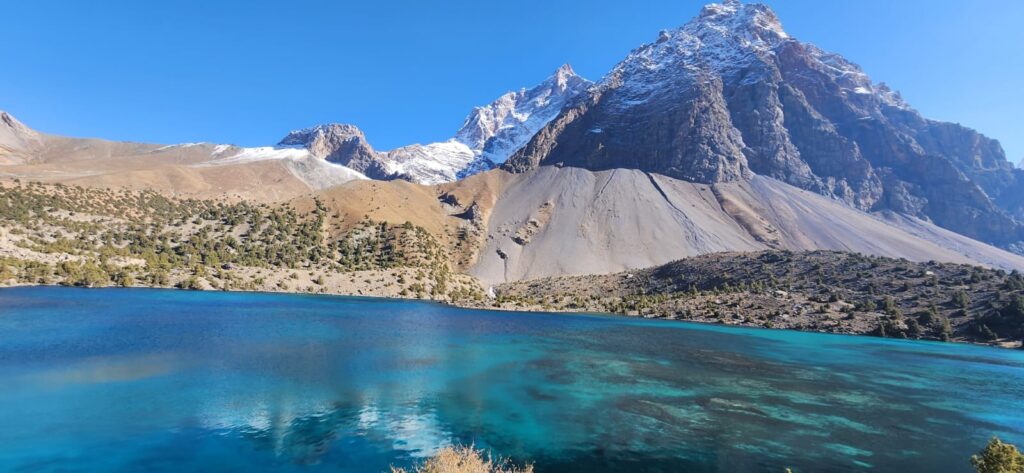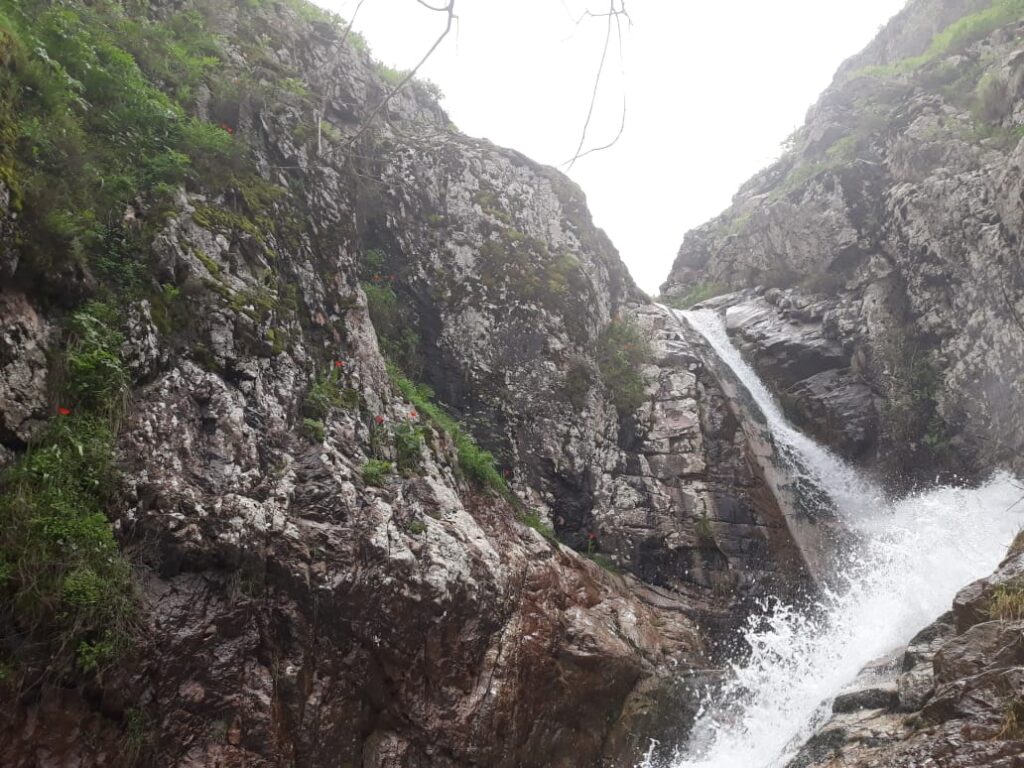In the mountains of Tajikistan, stone carries secrets. Beneath ridges and valleys lie veins of gold, seams of coal, and ores that shimmer with aluminum and antimony. Mining here is not new, the land has long offered minerals, but its scale and intensity have deepened since the Soviet period. Mines dig into mountainsides, rivers turn turbid with runoff, and tailings ponds glint like mirrors of waste. The geography of mining is written in scars: visible traces of extraction etched into fragile landscapes.
In the Zarafshan Valley, where gold mining dominates, villagers describe the river changing color after upstream operations. “It runs yellow,” one says, “not from sand, but from poison.” He gestures downstream, where crops grow thin and fish catches decline. Gold brings wealth to the state but suspicion to those living nearby. The contradiction is stark: wealth buried in mountains, poverty spread in valleys.
The Soviet Union industrialized Tajik mining, developing aluminum at Tursunzade and exploring antimony, mercury, and coal reserves. Aluminum remains a pillar: the Tursunzade smelter is one of the largest in Central Asia, consuming enormous electricity, mostly generated by hydropower from Nurek. Yet Tajikistan has no domestic bauxite; alumina is imported. The industry is both central and paradoxical: an aluminum giant built in a country without aluminum ore (Linn, 2008). The geography is global: imports from abroad, energy from rivers, pollution at home.
Mining landscapes are double geographies: the wealth beneath and the wounds above. They reveal the tension between what the earth offers and what extraction leaves. Gold glitters in markets, aluminum shines in cables, but valleys hold tailings, rivers carry toxins, and mountains slump where tunnels dig too deep. These scars are both economic lifelines and ecological burdens.
Gold extraction brings its own costs. Mercury has been used historically to process ore, leaving residues that persist in soils and sediments. Cyanide, another common processing agent, carries risks of leakage. Studies in Central Asia note elevated heavy metal concentrations near mining zones, threatening groundwater and agriculture (Strezov & Nonova, 2009). Local families sometimes voice fears quietly: “We see more sickness,” one woman whispers. “But who will listen?”
Aluminum production at Tursunzade casts another shadow. Smelter emissions include fluorides and particulates. Farmers near the plant report crop damage and livestock dental problems linked to fluoride exposure (Kasimov et al., 2001). Airborne pollutants settle on fields, altering soil chemistry. The smelter, visible from kilometers away, looms like a monument to modern industry and to environmental compromise.
Mining scars are visible from space. Satellite imagery shows stripped slopes, new roads cutting into valleys, tailings ponds spreading across floodplains. One researcher noted how satellite data from 1990s to 2000s revealed doubling of disturbed land in certain districts (Rowe, 2010). Ground photos confirm: hillsides once covered in juniper now bare, slopes unstable, erosion deepening. What appears as industrial progress in policy reports appears as barren land in villages.
Communities navigate ambivalence. Mines offer employment in remote areas where options are scarce. Wages, though low, provide lifelines. A young miner says, “I work underground because there is nothing else. My father farmed, but the soil is poor now.” Employment ties families to mines even as they bear the costs. Some villages have split identities: miners and farmers, each blaming the other for environmental decline.
Hydrology magnifies mining’s imprint. Wastewater often enters tributaries, carrying sediments and chemicals downstream. In mountain regions, rivers are lifelines; their contamination spreads widely. Tailings dams, if poorly maintained, risk failure. A 1992 spill in northern Tajikistan released toxic waste into local rivers, killing fish and polluting irrigation channels (Kraemer, 1992). People remember that year as one of sickness, fields lost to poisoned water. Such events linger in memory and soil.
Tajikistan’s geology makes it rich in minerals but also fragile. Steep slopes mean erosion is rapid once vegetation is cleared. Earthquakes threaten tailings dams and shafts. Heavy rains mobilize waste. The landscape is dynamic, amplifying risk. Scientists emphasize that mining in seismically active mountains requires extraordinary safeguards, however these safeguards are costly, often neglected under economic pressure (UNEP, 2002).
In the Pamirs, small artisanal mines operate alongside larger projects. Families pan rivers for gold, scraping subsistence from sediments. Children sometimes join, washing gravel in cold water, hoping for flakes. These activities are marginal but carry risks of mercury and sedimentation. Artisanal mining reflects poverty as much as geology. It is a livelihood of last resort.
State narratives present mining as progress. Reports highlight foreign investment, revenue, and jobs. But villagers describe noise, dust, loss of grazing land, and restrictions near mining zones. Some say ancestral cemeteries were disturbed by exploration roads. Geography here becomes contested: the state claims mountains as resource, locals claim them as homeland.
Cultural memory adds depth to this contest. In some communities, mountains are sacred, sources of water and spirits. Mining disrupts not only ecology but cosmology. An elder from Rasht says, “The mountain is alive. When you cut it, it bleeds.” His metaphor captures the sense of desecration felt when tunnels hollow sacred ground.
International organizations warn of cumulative impacts. The World Bank noted in early assessments that Tajikistan faces legacy pollution from Soviet-era mining sites, where tailings remain exposed, leaching heavy metals decades after closure (World Bank, 2004). Cleanup is expensive, rarely funded. Children play near abandoned pits, unaware of dangers. These legacies endure, a toxic inheritance.
Not all stories are bleak. Some experiments with reclamation have begun. Planting salt-tolerant grasses on tailings, reforesting stripped slopes with hardy species, and stabilizing dams are small steps. NGOs advocate for corporate accountability, stronger regulations, and community monitoring. Yet progress is uneven. Mining’s momentum often outpaces remediation.
At dusk in Tursunzade, the smelter glows with orange light, smoke rising into dark sky. Trucks rumble past carrying ore, fuel, materials. The city lives with the plant, dependent and exposed. In Zarafshan, miners descend into shafts, lights on helmets piercing darkness. Families wait at home, cooking bread, hoping for wages. The land holds wealth but also wounds.
To think of mining landscapes in Tajikistan is to see contradictions embodied in stone. Gold, aluminum, antimony, coal: each binds Tajikistan to global markets, yet each leaves local scars. Geography here is not a static land but dynamic extraction, where mountains becoming pits, rivers becoming waste channels, valleys becoming industrial corridors. The scars are visible, but so too are the lives entangled in them.
References
- Kasimov, N. S., et al. (2001). Environmental impacts of the Tursunzade aluminum smelter. Environmental Earth Sciences, 40(2), 163–170.
- Kraemer, D. (1992). Industrial pollution in Tajikistan: case study of a tailings spill. Environmental Hazards Review, 4(3), 27–34.
- Linn, J. F. (2008). Central Asia: The Challenges of Transition. World Bank Policy Papers.
- Rowe, W. (2010). Mining and environmental change in Tajikistan: satellite evidence. Geocarto International, 25(4), 311–328.
- Strezov, V., & Nonova, T. (2009). Trace elements in mining regions of Central Asia. Environmental Monitoring and Assessment, 152, 423–436.
- UNEP. (2002). Tajikistan: State of the Environment Report.
- World Bank. (2004). Tajikistan: Environmental Legacy of Mining.








